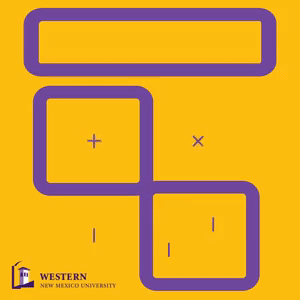The members of Stronger Economies Together met in Glenwood last week. The group is now called the Southwest New Mexico Economic Development Partnership.
Although, because of a change of schedule, only about a dozen people could attend, Maureen Craig, who has been serving as the organizer and secretary of the group, said that at the previous meeting, it was discussed how to create a directory showcasing businesses to promote the area.
Craig also announced that she has resigned her position at the Southwest New Mexico Council of Governments to pursue personal business activities. It is likely her replacement will take over the duties.
Anthony Gutierrez of Grant County said a strategic plan is being developed as an exercise to flesh out a proposed archery cluster of businesses for the four-county area of Catron, Grant, Luna and Hidalgo.
"We started with hunting, which we will be able to capitalize on in the area," Gutierrez said. "We want to make the plan an action, not just a document."
Michael Patrick, who has served as trainer for the SET program and is continuing to mentor activities, introduced himself and said he works for the U.S. Department of Agriculture State Rural Development Division and the Cooperative Extension Service.
He gave an overview of the SET program for a newcomer to the process.
The SET program was rolled out in eight states, of which New Mexico was one, with two sites in the northeastern part of the state and the one he was attending in the southwestern corner.
Phase II of the program rolled out in 12 more states, and it is planned to begin the program in 18 additional states.
Every applicant must be a rural area and serve multiple counties.
"We have come up with an actionable strategic plan, with specifics underneath it, such as the archery cluster. The final product belongs to the region," Patrick said.
A memorandum of understanding is an important part of the process to involve every county and municipality in the group. About half the entities in the area have signed it and others are addressing it as their governmental agencies hold meetings.
"We want to focus where we can get the biggest bang for the buck," Patrick said. "We've been focusing on tourism, because that's what the group agreed on."
Lif Strand, Catron County economic developer, suggested timber industry and wood products also be considered as options.
Gutierrez pointed out that Patrick had mentioned funding, and wondered if that included a paid person to move things forward.
Patrick did not give a direct answer, but said a focused plan can maximize the multiplier effects to "create a pool of funds."
He said planning money is available, with the requirements of a sponsoring organization, a show of broad-based support and a focus on specific activities.
Patrick recommended that, once the group decides where the focus is, the members plan a meeting with the USDA state director Terry Bruner, and ask him if the USDA will help fund efforts.
Strand asked about the group's structure and possible duplication with other entities.
"We are looking for commonality, not competition," Craig said.
Gutierrez pointed out that Grant County may want to seek a grant, but is not competitive with Albuquerque, so "if we work regionally, we can be more competitive."
Craig said the group is seeking more business participation.
Strand recommended seeking a certified community initiative status, which could be a tool for marketing.
Patrick challenged Strand to participate in the group, because "we need someone with your skills to participate."
Gutierrez said knowing what other counties are doing is also a plus for the group, so entities do not go after the same things.
Strand suggested also reaching out to southeastern Arizona counties.
When the discussion moved to the archery cluster concept, Patricks said the cluster should be put into a larger contest of other clusters to provide the largest multiplier impact.
He suggested a gap analysis. Because everything in the region come from local sources or somewhere else, the group needs to decide what gaps to fill, including business-to-business and business-to-customer.
Gutierrez said he has the information for Grant County, but not for the other counties.
Patrick suggested each county establish its own cluster analysis and then meld them. "Get a planning grant and hire professional services in order to know where you're going."
Gutierrez said the county is working on an economic development plan, and the consultant will be required to work regionally.
Patrick assigned two tasks: a cluster analysis and a way to move the strategic plan forward.
"The Environmental Protection Agency has grants for sustainable communities," Patrick pointed out.
He also talked about value chains and perhaps the need to create a business to fill the value chain gaps. "You need to understand how the cluster is mapped."
The only way an import substitution can work is if the local source creates products of equal quality, and the customer realizes he or she may need to pay more for the local source.
Strand said including a subcluster of archery in a larger cluster of hunting could create opportunities to get national organizations to sign on to the effort.
"So much can be done with a few committed people," she said. "I find it exciting."
During a working lunch, Gutierrez said Grant County is pursuing the archery cluster and manufacturing capability. He suggested other counties could capitalize on making, for example, aspects of bows and arrows.
Patrick asked who would capture the information already available, get the plan done and get planning money.
Craig pointed out that a regional economic development plan is available under publications on the www.swnmcog.org website.
Patrick said the elements needed are to describe the region, included the vision and goals, and create implementable activities. The planning grant could help flesh out the latter.
Patrick suggested the group focus on getting the signatures for the MOU, complete the strategic plan, while continuing to develop a business directory for print and online.
The next meeting will take place Friday, Dec. 9, at 10 a.m. at the Mimbres Learning Center in Deming. Staring in January, the group will go back to the second Wednesdays of the month for their meetings.








